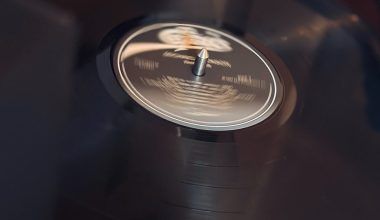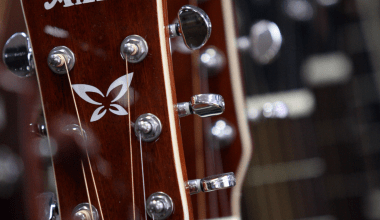Resonance of sound is a fascinating phenomenon that occurs when an object vibrates in harmony with an external sound wave. This synchronization amplifies the vibrations, resulting in a stronger, richer sound. Resonance is everywhere—in music, science, and the natural world—and understanding it can deepen your appreciation for how sound shapes our lives.
In this blog, we will explore what resonance of sound is, how it works, and its real-world applications. Whether you’re a student, musician, or curious reader, this guide will explain resonance in simple, easy-to-understand terms.
Understanding the Basics: What Is Resonance of Sound?
At its core, resonance happens when the frequency of a sound wave matches the natural frequency of an object. Imagine a tuning fork. When struck, it vibrates at a specific frequency. If another tuning fork of the same frequency is nearby, it will start vibrating too, even without being struck. This is resonance in action.
The key factors behind resonance include:
- Frequency: The number of vibrations per second, measured in Hertz (Hz).
- Amplitude: The strength or intensity of the sound.
- Medium: The material through which the sound travels, such as air or water.
Resonance amplifies sound because energy from the sound wave is transferred to the object, causing it to vibrate more intensely.
Types of Resonance in Sound
There are several forms of sound resonance, each with unique characteristics:
- Acoustic Resonance
Acoustic resonance occurs in air-filled spaces, such as musical instruments. For example, the body of a guitar amplifies the vibrations of its strings, creating a richer sound. - Mechanical Resonance
This happens when physical objects vibrate due to sound waves. A common example is a glass shattering when exposed to a high-pitched sound at its resonant frequency. - Sympathetic Resonance
This occurs when one vibrating object causes another object to vibrate. For instance, a piano string can resonate when exposed to a matching frequency. - Structural Resonance
Large structures, like bridges, can experience resonance. Engineers consider this when designing buildings to prevent disasters like the Tacoma Narrows Bridge collapse.
How Resonance of Sound Works
Resonance of sound relies on energy transfer. When the frequency of a sound wave matches an object’s natural frequency, energy flows into the object, causing it to vibrate. The vibrations grow stronger until energy loss (like friction or air resistance) balances the incoming energy.
Here’s a step-by-step explanation of how resonance works:
- Sound Wave Interaction: A sound wave approaches an object.
- Frequency Matching: If the wave frequency matches the object’s natural frequency, the object starts vibrating.
- Amplification: The vibrations increase, amplifying the sound.
- Energy Equilibrium: The process continues until energy input equals energy loss.
Real-World Examples of Resonance in Sound
Resonance of sound is all around us. Here are some everyday examples:
- Musical Instruments: Stringed instruments like violins and guitars use resonance to amplify sound. The hollow body of these instruments resonates with the strings’ vibrations, creating a louder, fuller tone.
- Human Voice: The vocal cords and cavities in your throat and mouth create resonance, shaping your voice’s unique sound. Singers often train to enhance resonance for a richer voice.
- Concert Halls: Architects design concert halls to enhance acoustic resonance, ensuring every note reaches the audience clearly.
- Nature: Have you ever heard a seashell “sing”? The sound is caused by resonating air within the shell.
Resonance in Music
Music relies heavily on resonance. It’s what makes instruments sound beautiful and distinct. Without resonance, sound would lack depth and richness.
- Strings: When you pluck a guitar string, the body resonates, amplifying the sound.
- Percussion: Drums rely on resonance to produce deep, resonant beats.
- Wind Instruments: In flutes and trumpets, air columns resonate to create clear notes.
Musicians learn to control resonance to shape their sound, making it an essential skill for performers and composers alike.
The Science Behind Resonance of Sound
Understanding the science of resonance helps us appreciate its role in technology and innovation. Here are some scientific applications:
- Medical Imaging
Magnetic Resonance Imaging (MRI) uses sound resonance principles to create detailed body scans. - Engineering
Engineers design structures to avoid destructive resonance, ensuring safety during earthquakes or strong winds. - Communication
Resonance improves sound clarity in devices like microphones and speakers. - Astronomy
Scientists study celestial resonance to understand the orbits and movements of planets and stars.
How to Observe Resonance of Sound at Home
You don’t need fancy equipment to observe resonance. Try these simple experiments:
- Tuning Fork Experiment
Strike a tuning fork and hold it near another fork of the same frequency. The second fork will start vibrating. - Glass Resonance
Run a wet finger around the rim of a wine glass to create a resonant sound. - Guitar String Resonance
Pluck a guitar string and place your hand lightly on the body to feel it vibrate.
Why Understanding Resonance Matters
Resonance isn’t just a scientific curiosity; it has practical importance in many fields:
- Music: Helps create and control sound quality.
- Engineering: Ensures structural safety.
- Medicine: Improves diagnostic tools like MRI.
By understanding resonance, we can innovate and solve real-world problems.
Conclusion:
So, what is resonance of sound? It’s the amplification of vibrations when a sound wave matches an object’s natural frequency. From musical instruments to scientific discoveries, resonance shapes our world in incredible ways.
Learning about resonance deepens your understanding of sound and its applications. Whether you’re playing an instrument, designing a building, or simply curious, resonance is a phenomenon worth exploring.
Related Articles:
For further reading, explore these related articles:
- What is Mono Audio: A Simple Guide to Mono Sound and Its Applications
- Online Mastering: Make Your Music Sound Amazing
For additional resources on music marketing and distribution, visit Deliver My Tune.






